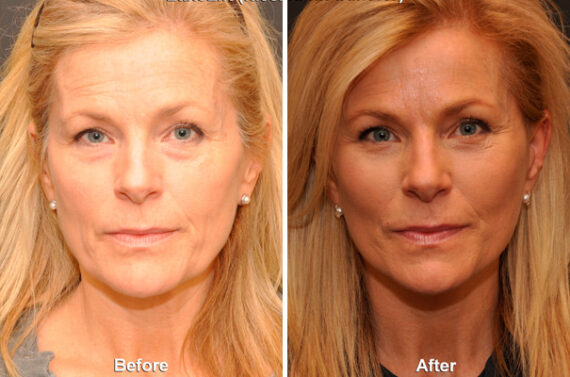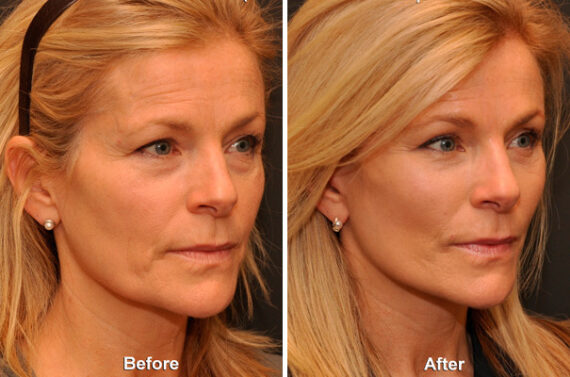Are you starting to notice subtle changes in your face, like sagging skin, deepening lines, or a tired appearance that doesn’t match how you feel inside? Facelift surgery is one of the most effective ways to reverse these signs of aging and restore a naturally youthful look. But many patients find themselves wondering: What is the best age for a facelift?
The answer isn’t one-size-fits-all, and that’s what makes the topic so interesting. Factors like skin elasticity, lifestyle, genetics, and personal goals all play a role. In this article, we’ll explore the age-related aspects of facelifts and help you understand when it might be the right time to take the next step toward facial rejuvenation.

What is the Average Age for Facelift Surgery?
The average age for facelift surgery typically falls between 45 and 60 years old. This range represents a time when facial aging becomes more pronounced and skin elasticity starts to diminish. While there’s no single “perfect age,” this window often offers the best balance between visible aging and still having enough skin elasticity to achieve optimal results. Ultimately, the decision depends on individual goals and how aging has impacted your appearance.
Signs You May Need a Face Lift Procedure
Facial aging is a gradual process, and many patients don’t realize how much their features have changed until the signs become more noticeable. Recognizing when it might be time for a facelift procedure can help you act at the right moment—before those changes become too advanced.
Here are common signs that you may be a candidate for a facelift:
- Deep wrinkles and facial folds that don’t improve with skincare or non-surgical treatments
- Loose skin along the jawline or neck, often referred to as jowls or “turkey neck”
- Loss of volume in the midface, giving the cheeks a sunken appearance
- Tired or sagging facial expression, even when you’re well-rested
- Desire to restore a youthful look without dramatically altering your appearance
If these symptoms sound familiar, a facelift procedure might be the next step in your aesthetic journey.
What Facelift Would Benefit You More At Different Ages
There’s no universally “right age” for a facelift, because each face ages at its own pace. However, understanding the types of facelifts available and how they suit different stages of aging can help you make a more informed choice. Whether you’re just starting to see subtle signs of aging or facing more advanced concerns, there are many benefits to choosing a procedure that matches your needs and age range.
Early 40s to early 50s
Patients in their early 40s to early 50s—especially those entering their late 40s—often begin to notice the first more noticeable signs of aging, such as mild skin laxity and early jowling. This age range is ideal for less invasive options like the mini facelift, which targets the lower face with shorter incisions and reduced downtime. It’s a strategic way to maintain a youthful appearance without undergoing a full surgical lift, offering subtle yet impactful rejuvenation at the right time.
Mid-50s to early 60s
During the mid-50s to early 60s, many patients begin to experience more advanced signs of aging, such as deeper wrinkles, more significant sagging, and loss of facial volume. At this stage, a traditional facelift—or full facelift—is often the most effective option. This comprehensive approach addresses the midface, jawline, and neck, providing more dramatic and longer-lasting results. Patients in this age range typically benefit the most from a procedure that can fully restore youthful contours and balance.
60s and beyond
In your 60s and beyond, facial aging is typically more advanced, which makes a personalized, individualized approach essential. A full facial rejuvenation surgery during this time often includes complementary procedures such as a brow lift, neck lift, and fat transfer to restore volume and contour. These additions enhance the outcome of the facelift itself, helping achieve a more harmonious and youthful overall result. Because every face ages differently, customizing the surgical plan ensures the most natural and satisfying transformation.
Real Facelift Patient Results


Each patient is unique and individual results may vary*.
What If You’re Not Ready Yet? Alternatives to a Facelift
Not everyone is ready for plastic surgery—and that’s perfectly fine. For those who want to enhance their appearance without committing to a facelift, there are several effective, non-surgical options available. These treatments can address mild to moderate signs of aging and help you maintain a youthful look while delaying the need for surgery.
Here are some popular alternatives to a facelift:
- Dermal Fillers: Add volume to areas like the cheeks, under-eyes, and nasolabial folds to smooth lines and restore youthful contours.
- Botox: Temporarily relaxes facial muscles to reduce the appearance of dynamic wrinkles, especially on the forehead and around the eyes.
- Laser Skin Resurfacing: Improves skin texture and tone by stimulating collagen production, helping reduce fine lines, sun spots, and acne scars.
- Thread Lifts: A minimally invasive option that uses dissolvable threads to lift sagging skin, offering subtle lifting results without surgery.
These alternatives can be great interim solutions or complementary treatments for those not quite ready for facial surgery.

Work With an Expert Facial Plastic Surgeon
Choosing the right specialist for your facelift is essential for achieving safe, natural-looking results. Experience matters greatly, especially in facial procedures where precision, artistry, and an understanding of facial anatomy make all the difference. A skilled facial plastic surgeon will not only guide you through the best age and approach for your facelift but will also tailor the procedure to match your unique facial structure and aging pattern.
Dr. Dr. Alexander S. Donath brings over 10 years of experience and advanced fellowship training from one of the world’s most prestigious programs in facial plastic and reconstructive surgery. Widely recognized as a Top Doctor in Cincinnati, Dr. Donath blends technical excellence with aesthetic vision to deliver results that look refreshed, not overdone. Ready to take the next step? Call us at 513-891-5438 or visit our contact page to schedule your consultation today.
Age-Related FAQs About Facelift
What are the age-related risks of having a facelift?
As with any surgical procedure, age can influence certain risk factors associated with a facelift. Older patients may have slower healing times, higher chances of complications related to anesthesia, and increased susceptibility to bruising or swelling. That said, a patient’s overall health is usually more important than their age alone. With proper planning and a skilled surgeon, the risk of visible scars and other complications can be minimized. Choosing an experienced facial plastic surgeon ensures these factors are carefully assessed and addressed for a safe and smooth recovery.
What age is too late for a facelift?
There’s no official age limit for having a facelift. What matters most is your general health, skin condition, and goals. Many patients in their late 60s or even 70s have successful results with facelift surgery when they are in good health and have realistic expectations. Older patients may need more tailored surgical plans, sometimes including less invasive techniques, but they can still achieve noticeable improvements. A consultation with a facial plastic surgeon will determine if the procedure is appropriate based on your age and overall well-being.
How young is too young for a facelift?
While most facelift patients are in their 40s or older, some individuals in their mid-to-late 30s may consider the procedure if they have premature signs of aging due to genetics, lifestyle, or weight fluctuations. However, undergoing a facelift too early can lead to unnecessary surgical intervention when less invasive treatments might suffice. Younger patients are often better candidates for non-surgical options like fillers or skin-tightening treatments. A qualified facial plastic surgeon will evaluate your specific concerns and advise whether a facelift or a less invasive solution is appropriate for your age and goals.

